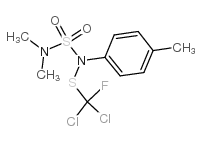The novel endocrine disruptor tolylfluanid impairs insulin signaling in primary rodent and human adipocytes through a reduction in insulin receptor substrate-1 levels.
Robert M Sargis, Brian A Neel, Clifton O Brock, Yuxi Lin, Allison T Hickey, Daniel A Carlton, Matthew J Brady
文献索引:Biochim. Biophys. Acta 1822(6) , 952-60, (2012)
全文:HTML全文
摘要
Emerging data suggest that environmental endocrine disrupting chemicals may contribute to the pathophysiology of obesity and diabetes. In a prior work, the phenylsulfamide fungicide tolylfluanid (TF) was shown to augment adipocyte differentiation, yet its effects on mature adipocyte metabolism remain unknown. Because of the central role of adipose tissue in global energy regulation, the present study tested the hypothesis that TF modulates insulin action in primary rodent and human adipocytes. Alterations in insulin signaling in primary mammalian adipocytes were determined by the phosphorylation of Akt, a critical insulin signaling intermediate. Treatment of primary murine adipose tissue in vitro with 100nM TF for 48h markedly attenuated acute insulin-stimulated Akt phosphorylation in a strain- and species-independent fashion. Perigonadal, perirenal, and mesenteric fat were all sensitive to TF-induced insulin resistance. A similar TF-induced reduction in insulin-stimulated Akt phosphorylation was observed in primary human subcutaneous adipose tissue. TF treatment led to a potent and specific reduction in insulin receptor substrate-1 (IRS-1) mRNA and protein levels, a key upstream mediator of insulin's diverse metabolic effects. In contrast, insulin receptor-β, phosphatidylinositol 3-kinase, and Akt expression were unchanged, indicating a specific abrogation of insulin signaling. Additionally, TF-treated adipocytes exhibited altered endocrine function with a reduction in both basal and insulin-stimulated leptin secretion. These studies demonstrate that TF induces cellular insulin resistance in primary murine and human adipocytes through a reduction of IRS-1 expression and protein stability, raising concern about the potential for this fungicide to disrupt metabolism and thereby contribute to the pathogenesis of diabetes.© 2012 Elsevier B.V. All rights reserved.
相关化合物
| 结构式 | 名称/CAS号 | 分子式 | 全部文献 |
|---|---|---|---|
 |
甲苯氟磺胺
CAS:731-27-1 |
C10H13Cl2FN2O2S2 |
|
Baby food production chain: pesticide residues in fresh appl...
2005-12-01 [Food Addit. Contam. 22(12) , 1231-42, (2005)] |
|
[Occurrence of pesticide residues in raspberries in 2000-200...
2007-01-01 [Rocz. Panstw. Zakl. Hig. 58(3) , 509-13, (2007)] |
|
Exposure to fungicides in fruit growing: re-entry time as a ...
1999-01-01 [Am. Ind. Hyg. Assoc. J. 60(6) , 789-93, (1999)] |
|
Processing factors and variability of pyrimethanil, fenhexam...
2003-08-01 [Food Addit. Contam. 20(8) , 728-41, (2003)] |
|
Xenobiotics and the glucocorticoid receptor: additive antago...
2005-04-01 [Basic Clin Pharmacol Toxicol. 96(4) , 309-15, (2005)] |